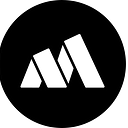Becoming Indistractable
TLDR; Take back your time, your attention, and your energy. Become indistractable.
“Believing we’re powerless makes us less likely to do something about the problem. We have way more power than we think.” — Nir Eyal
Dear Reader,
One summer afternoon in 2017, Nir Eyal was playing with his daughter. He had bought a book of fun activities and they were working through them page by page. One idea was to ask his daughter a simple question: what superpower would you most like to have? Eyal asked his daughter and watched her mull over her decision in her head… but he never heard the reply.
As she contemplated her superpower, Eyal’s phone dinged in his pocket and he became distracted with whatever the message was that he had received. By the time he snapped back to reality, his daughter had walked away.
“She got the message that she was less important than my device.”
Today is a little different. Rather than share our usual news and updates, we are using this newsletter to ask you a question: Are you living your life with intent?
In today’s fast-pasted, tech-driven world, distractions live everywhere — from the pop-up ad online to the ping of your phone to the push notification on your computer. This is a wake-up call — a reminder — that you must protect your attention.
And no one is better suited to share that message than Nir Eyal, author of Hooked and, most recently, Indistractable. He joined us on Mission Daily to explain why we get distracted and identify tactics for how to overcome it.
The experience with his daughter shocked Eyal, who believed that he placed family above just about anything else. But he realized that he had allowed his technologies and devices to push barbs into his attention, dragging him away from what he valued most.
Eyal immediately started researching the problem, searching for a solution. As he sat alone in his garden with just his phone for company, Eyal knew something was wrong.
“I knew I had to figure this out. So I do what I always do when I have a problem I don’t know the answer to: I researched.”
Becoming Indistractable
Eyal went straight to the nearest book store and picked up dozens of books on digital detoxing, digital addiction, and technology use. He binge-read all of them in a self-help marathon. Like a diligent student, he followed their advice, but the results were disappointing.
He followed one suggestion and bought an old feature phone and laptop from eBay, the sort which couldn’t connect to the internet, and sat down to work without any distractions. But it didn’t work. He’d sit down and immediately want to read a book or clean his desk or take out the trash. The distractions were still there, they just weren’t on his phone.
“The fact is, most of the books out there are written by self-help people, not academics,” he says. “And they all say the same thing: ‘Go on a digital detox. You should meditate. Just get rid of the technology. Do a 30-day plan.’”
There was no lack of proposed solutions. It just seemed like no one understood the problem.
So Eyal dug past the surface-level self-help books and into the academic research. “What I found is that there’s a real gap between what the self-help books say and what the academic literature says,” Eyal says. He found that distraction is more complicated than just the dings, pings, and rings coming from our phones.
In fact, he discovered something completely different at the heart of distraction: internal triggers — those things inside of us that predispose us to distraction. When we feel bored, we open YouTube. When we feel unsure about something, we open Google. When we feel lonely, we open Facebook. Nir says these internal triggers drive the majority of our distracting impulses — yet we barely talk about them. And that’s what led him to write Indistractable.
Indistractable deconstructs distraction into its four elements:
1) Internal triggers, the feelings within yourself that drive you to distraction.
2) External triggers, the dings, pings, and rings from technology.
3) Traction, the actions that move you towards your goals.
4) Distraction, the actions that move you away from your goals.
To drive substantive behavioral change, you must focus on each element in turn, rather than focusing on one to the detriment of others. Eyal says he is proof his system works: he followed the process and radically overhauled his life.
Living Your Life
What started as an attempt to curb his own technology use quickly spiraled into a yearlong dive into human emotion, behavior, psychology, and purpose.
While writing Indistractable, Eyal ended up redesigning both his work and personal life, purposefully optimizing his life to promote the things he valued most. Eyal’s story is a great example of what we can achieve when we question our own behavior. His latest book, and indeed his new life, are the product of a simple question: Is this the life I want to live?
Eyal implores us to ask that question of ourselves. He wants us to challenge the hours we invest in Candy Crush and on Netflix. And if we decide that’s not how we want to live our lives, he wants us to make a change.
“Whatever you do with your time, I want you to do it with intent. That’s the goal here. It’s not about getting off of technology, it’s about using it with intent.”
To hear more from Eyal, listen in to our podcast interview with him. Learn more about his book: Indistractable: How to Control Your Attention and Choose Your Life.
This is the September 10th edition of the Mission Daily Newsletter. If you like what you read, join us on our mission.

